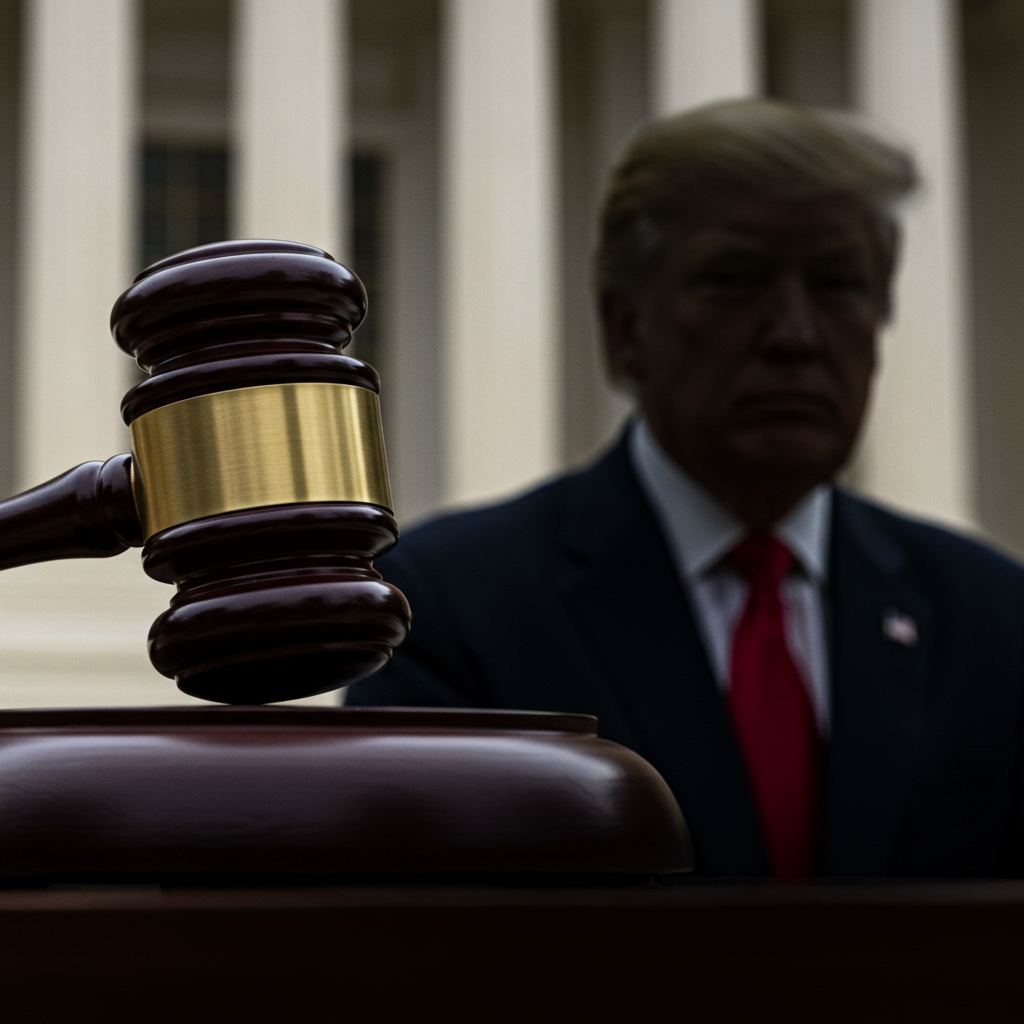A recent Supreme court decision has cleared a significant hurdle for the Trump administration, allowing plans for large-scale federal workforce reductions to move forward, at least temporarily. This pivotal ruling overturns a lower court injunction that had paused the widespread layoffs. While the Court did not issue a final judgment on the ultimate legality of the dismissals themselves, the order means tens of thousands of federal employees face renewed uncertainty about their jobs and futures as litigation continues in lower courts. Understanding the context, the legal arguments, and the immediate implications is crucial for affected workers navigating this complex situation.
Supreme Court’s Procedural Green Light
On July 8, 2025, the U.S. Supreme Court issued an unsigned order. This order was a procedural step, specifically lifting a temporary injunction that had been put in place by a federal district court judge and affirmed by the Ninth Circuit Court of Appeals. These lower courts had blocked the administration from proceeding with its planned “large-scale reductions in force,” or RIFs, without seeking congressional approval.
The Supreme Court’s decision did not delve into the constitutionality or legality of the administration’s overall plan for downsizing the federal government. Instead, the majority indicated that the administration was “likely to succeed” in arguing that the foundational executive order and related directives were lawful. By lifting the injunction, the Court allowed the administration to resume implementing layoff plans while the underlying legal challenges proceed through the judicial system. The Court explicitly stated it was expressing “no view on the legality of any” specific agency RIF plans, leaving those open for lower courts to decide.
The Administration’s Plan for a Smaller Federal Government
The impetus for these reductions stems from an executive order issued in February 2025. This directive mandated that federal agencies prepare for substantial RIFs. The administration described this effort as part of a broader initiative aimed at enhancing government efficiency by eliminating programs it characterized as wasteful, unnecessary, or beneficial to “radical interest groups.”
Accompanying the executive order was a memorandum outlining specific strategies. These included directives for agencies to develop plans for significant job cuts within weeks. A notable provision required a 4-to-1 attrition policy, permitting only one new hire for every four employees who depart. The plan also incorporated tools for removing underperforming staff and allowing temporary positions to expire, all under the umbrella of initiatives like the Department of Government Efficiency (DOGE), which has been linked to broader conservative blueprints such as Project 2025.
Scale of Potential Impact
Estimates from watchdog organizations suggest that the impact on the federal workforce is substantial. More than 75,000 federal employees were reportedly affected even before the temporary injunction was put in place, through job losses or acceptance of deferred resignation packages. Departments facing significant reductions include the Departments of Agriculture, Veterans Affairs, Energy, and the Environmental Protection Agency, among others like Commerce, Health and Human Services, State, and Treasury. Critics warn the overall plan could affect hundreds of thousands of positions if fully implemented without checks.
The Legal Clash: Executive Power vs. Congressional Mandates
The legal battle centers on the extent of the president’s authority to unilaterally restructure federal agencies and implement mass layoffs without explicit legislative approval. A coalition of labor unions, non-profit organizations, cities, and counties initiated the lawsuit, arguing that the administration’s executive order and directives exceeded the president’s constitutional powers and violated the separation of powers principle.
U.S. District Judge Susan Illston in California initially sided with the challengers. She issued a preliminary injunction in May, arguing that while presidents can set policy, large-scale reorganizations requiring mass RIFs need collaboration with Congress because Congress creates, funds, and defines the duties of federal agencies. Judge Illston also cited the potential for significant risks to critical government services, such as food safety inspections and healthcare access for veterans, as a basis for halting the cuts. A panel from the Ninth Circuit Court of Appeals upheld her ruling, describing the administration’s approach as sweeping and legally questionable. They echoed concerns about the difficulty of reversing the damage if the cuts proceeded (“no way to unscramble that egg”) should the plaintiffs ultimately win their case.
The Administration’s Counter-Argument
The Trump administration countered that the president possesses the inherent executive authority to direct agencies to conduct RIFs for reorganization purposes without needing additional statutory authorization from Congress. Solicitor General D. John Sauer argued that the lower court’s injunction was based on an “indefensible premise” that the president lacks such authority and that the injunction itself interfered with executive branch operations, halting in-progress RIFs, sowing confusion, and forcing the retention of employees deemed unnecessary, thus costing taxpayers. The administration also highlighted that the Supreme Court had previously granted stays allowing them to fire probationary employees, suggesting a pattern of supporting executive control over personnel.
Diverse Perspectives on the Supreme Court Bench
While the Supreme Court’s order was unsigned, revealing the majority’s view that the government is likely to prevail on the initial legal challenge to the executive order itself, the decision was met with strong differing opinions from individual justices.
Justice Ketanji Brown Jackson issued a notable dissent. She argued forcefully that the Court was acting prematurely by intervening at this stage and allowing the administration to proceed before the legality of the plans was fully determined. Jackson warned of “lasting consequences,” characterizing the executive action as promising “mass employee terminations, widespread cancellation of federal programs and services, and the dismantling of much of the Federal Government as Congress has created it.” She described the majority’s decision as allowing the President’s “wrecking ball” at the outset of litigation, deeming it “not only truly unfortunate but also hubristic and senseless.” She criticized the court’s perceived “enthusiasm for greenlighting this president’s legally dubious actions.”
In contrast, Justice Sonia Sotomayor wrote a separate statement concurring with the decision to lift the injunction. She emphasized that the lower courts retain the responsibility for evaluating whether the specific layoff plans comply with existing law. Sotomayor noted that the detailed agency plans themselves were not presented before the Supreme Court in this proceeding, meaning the Court had “no occasion to consider whether they can and will be carried out consistent with the constraints of law.” Her concurrence highlights the narrow scope of the Supreme Court’s ruling – focusing primarily on the legality of the executive order authorizing planning, not the legality of the actual layoff actions or their implementation.
Immediate Impact and Meaning for Federal Employees
The Supreme Court’s decision has immediately plunged the federal workforce into a period of heightened uncertainty. For employees across potentially dozens of agencies, the threat of job loss has become very real, very quickly. Agencies that had paused RIF actions are now cleared to resume them, and others are expected to issue new layoff notices swiftly.
Employment lawyer Tom Spiggle, founder of The Spiggle Law Firm, underscored the personal stakes involved. “This isn’t just about policy debates in Washington,” Spiggle stated. “It’s about people losing access to steady work, benefits, and a career they’ve built. Many federal employees are asking whether they have any rights in this process.” He stressed that while broad reorganizations and RIFs are occurring, individual dismissals are not automatically immune from legal challenge.
Spiggle highlighted that even during a large-scale reduction, it remains illegal to target an employee for dismissal based on protected characteristics. These can include factors such as age, disability, race, religion, gender, national origin, or retaliating against someone for past whistleblowing activity. He cautioned that RIFs can sometimes be used improperly to disguise unlawful discrimination or retaliation. Attorney General Pam Bondi praised the ruling, framing it as stopping “lawless lower courts” and allowing agencies to become “more efficient.” However, the coalition of plaintiffs views the decision as a “serious blow to our democracy” that endangers essential services.
Due process and legal rights still matter. Even with the Supreme Court clearing this procedural path, the administration’s actions are still subject to legal constraints and ongoing court review regarding their ultimate legality and implementation.
Navigating Uncertainty: Steps for Affected Workers
Given the renewed potential for layoffs, federal employees should take proactive steps, particularly if they believe they might be targeted unfairly or if a dismissal raises concerns about potential discrimination or retaliation.
Tom Spiggle advises careful documentation. Employees should keep records of their performance reviews, communications with supervisors, and any events that seem out of the ordinary or potentially related to discriminatory or retaliatory motives. Specific dates, names, and details are crucial.
He also strongly recommended considering consultation with an employment attorney. Navigating federal employment law and discrimination claims can be complex, and an attorney can help evaluate the specifics of an individual situation and explain potential rights and options.
A critical piece of advice involves deadlines. “You only have a limited window to file claims with the Equal Employment Opportunity Commission [EEOC],” Spiggle warned. “Sometimes you have as short as 180 days from the date of the adverse action.” Missing this deadline can permanently forfeit the right to file a claim. Understanding these strict time limits is vital for anyone considering legal action. Spiggle also noted that resources exist to help workers estimate the potential value of employment claims, which can inform decision-making even before initiating formal legal processes.
The legal fight over the administration’s authority and the legality of these RIFs is far from over. The case is expected to return to Judge Illston’s court, where the constitutional and statutory questions will continue to be litigated. However, employee separations are likely to occur in the interim, emphasizing the need for affected workers to understand their rights and potential steps to take promptly.
Frequently Asked Questions
What exactly did the Supreme Court ruling on federal layoffs do?
The Supreme Court issued an unsigned order on July 8, 2025, that lifted a lower court’s temporary injunction. This injunction had blocked the Trump administration from implementing large-scale federal layoffs (RIFs). The Supreme Court’s decision was procedural, allowing the administration to resume its layoff plans while litigation challenging their legality continues in lower courts. The Court did not issue a final ruling on whether the layoffs are ultimately legal under federal law or the Constitution.
What resources are available for federal employees facing potential layoffs?
Federal employees facing potential layoffs have several resources. They can consult with employment lawyers familiar with federal sector law to understand their specific rights and legal options. Labor unions representing federal employees are actively challenging the layoffs and providing support to members. The Equal Employment Opportunity Commission (EEOC) handles discrimination complaints in the federal sector. Employees should also research resources that can help estimate the value of potential employment claims if they suspect unlawful treatment.
What immediate steps should a federal worker take if they receive a layoff notice?
If a federal worker receives a layoff notice and suspects it may be discriminatory, retaliatory, or otherwise unlawful, they should act quickly. Key first steps include carefully documenting everything related to their employment, performance, and the circumstances surrounding the layoff notice. They should also be aware of strict deadlines, particularly the 180-day window for filing discrimination claims with the EEOC. Consulting with an employment attorney promptly is highly recommended to understand rights and options before deadlines expire.
Conclusion
The Supreme Court’s decision marks a significant procedural win for the Trump administration, permitting mass federal layoffs to resume as planned. This ruling lifts the temporary legal shield that had protected many employees, ushering in a period of profound uncertainty for the federal workforce. While the highest court has allowed the process to continue for now, it has expressly left the ultimate determination of the legality of these RIFs to the lower courts, where litigation will proceed. For federal employees, understanding their rights, recognizing potential signs of unlawful discrimination, and knowing the critical importance of documentation and prompt action are essential during this challenging and rapidly evolving situation.



